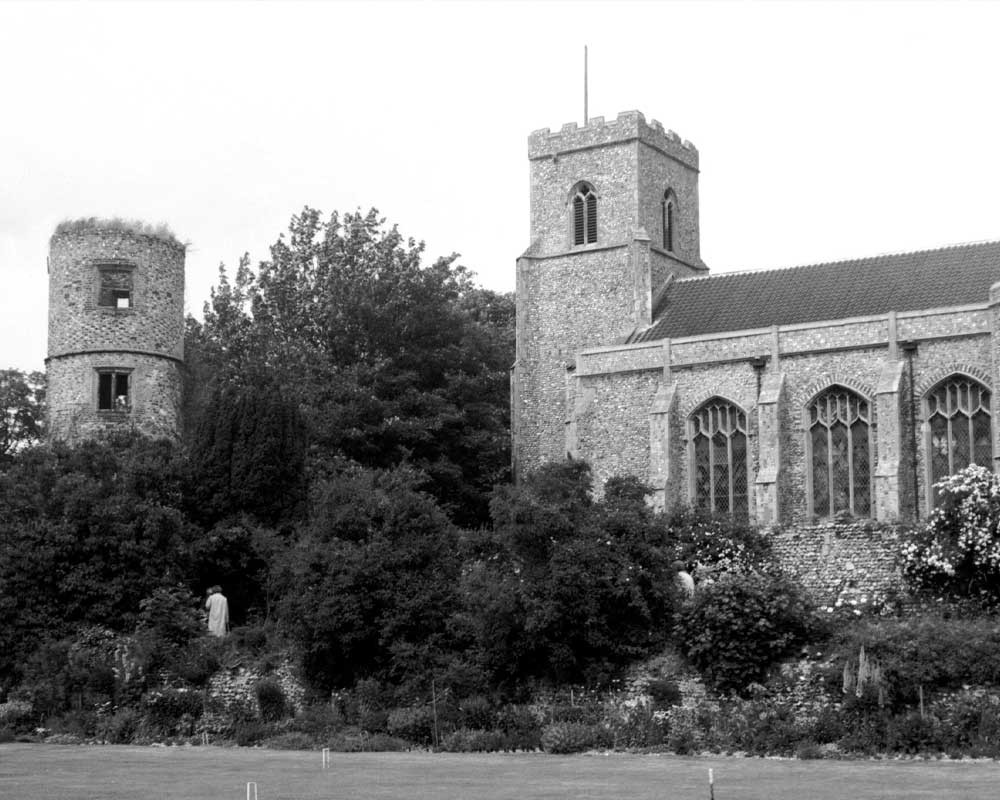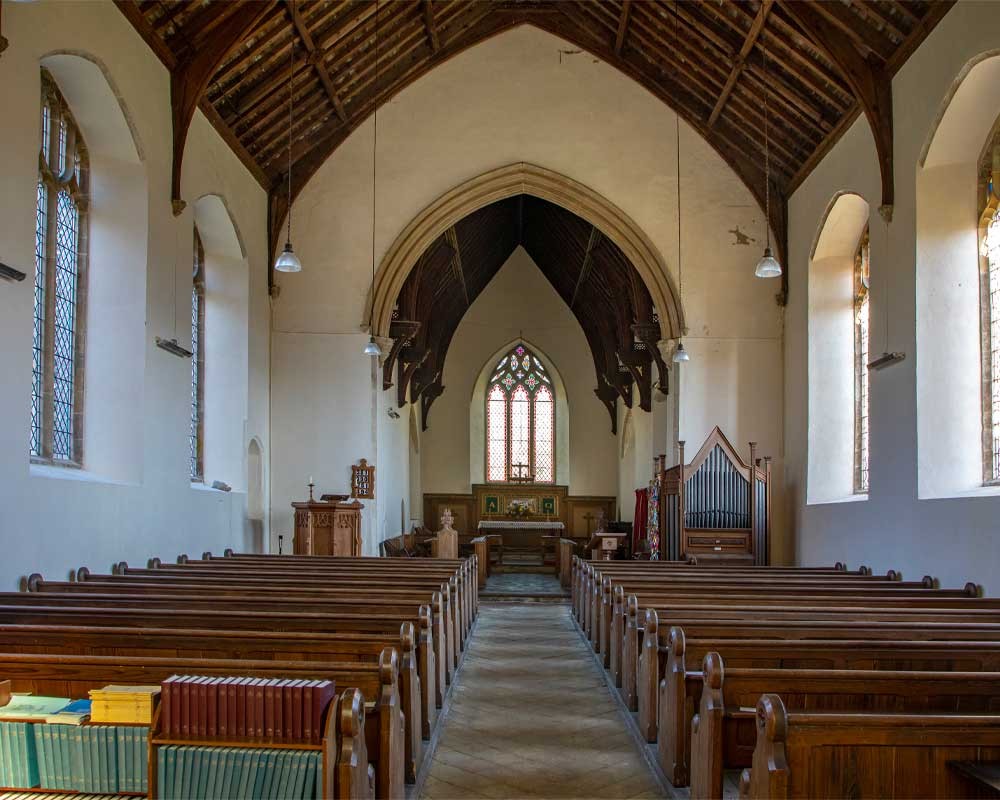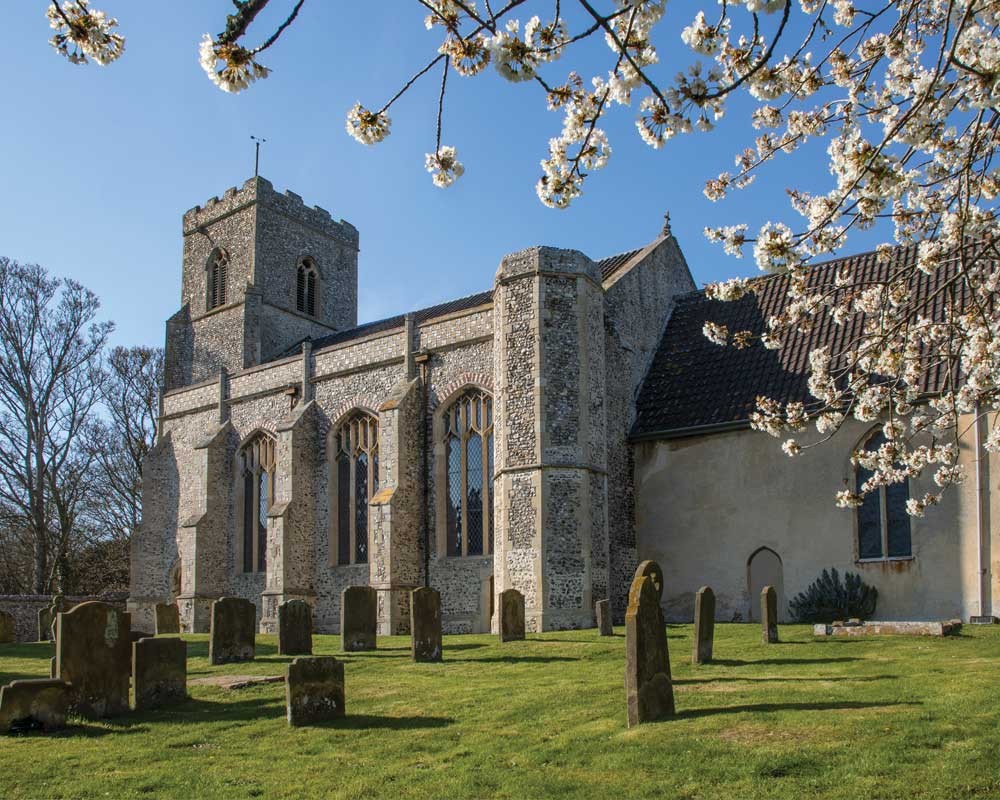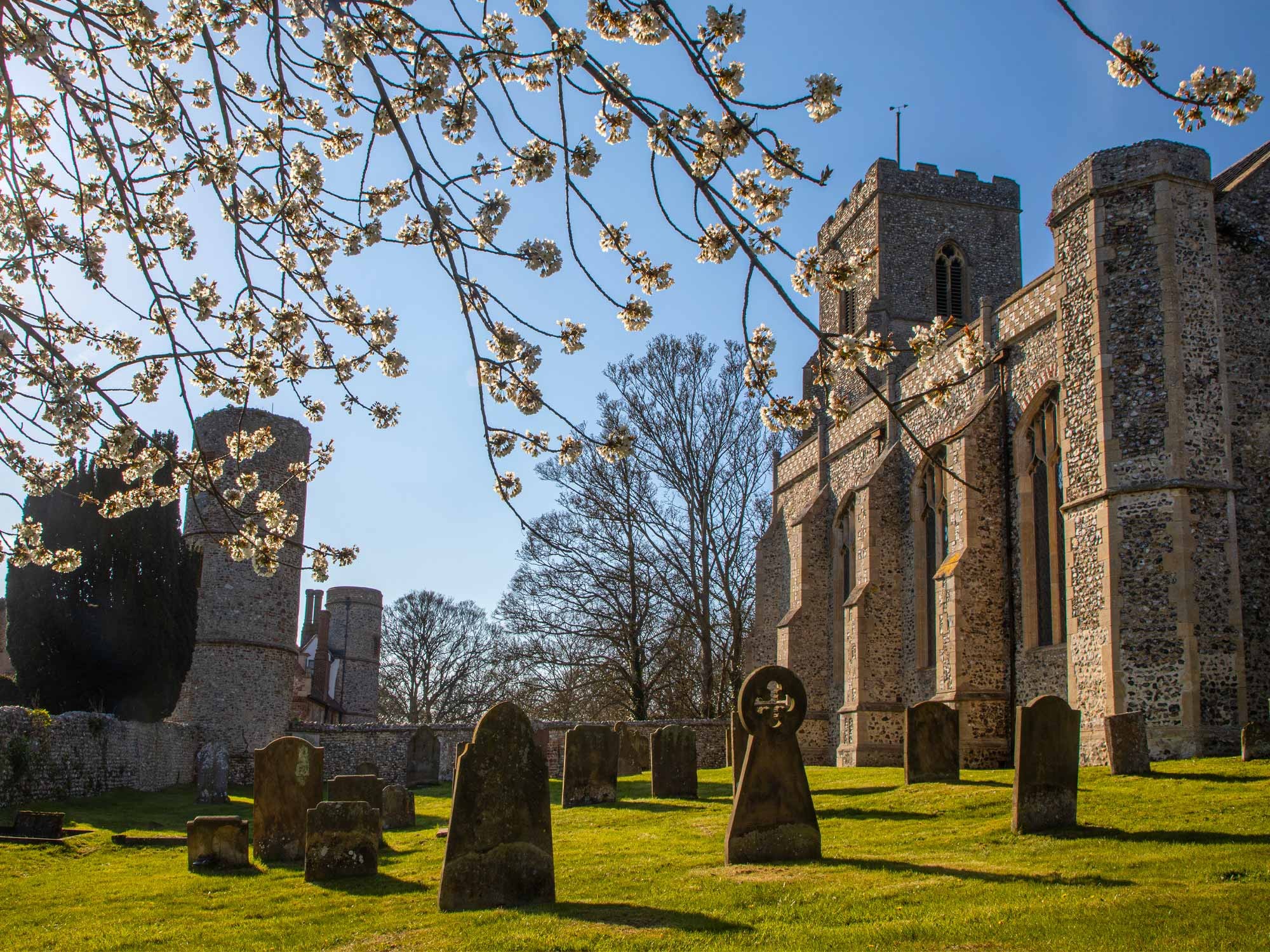
The fascinating story of Stiffkey’s church
There used to be two churches on this beautiful spot in north Norfolk, but St John the Baptist can tell enough stories for both of them - which includes everything from famous authors to national scandals...
Walk around the church of St John the Baptist at Stiffkey and it’s hard to imagine that until the middle of the 16th century there were two churches in the same churchyard. Virtually nothing remains of the church of St Mary today, but its companion has a religious tradition that stretches back over 900 years. And maybe even longer, since a old legend suggests this was the site of a pre-Christian burial mound.
Behind the window at the east end of the church is a lovely conservation area tended by parishioners to encourage wildflowers, butterflies and lichens - and it’s here that the second church almost certainly stood.
At the junction of the south and west walls of the churchyard stands one of the imposing towers of the adjacent Stiffkey Old Hall - a magnificent private home that was built in 1576 by Sir Nicholas Bacon, who was Lord Keeper of the Great Seal during the first half of Elizabeth I’s reign and was the father of the famous philosopher and statesman Francis Bacon.
In the 1930s it was home to Henry Williamson, best known for his 1927 book Tarka the Otter. The much-loved story has never been out of print and was largely responsible for changing people’s attitudes towards the animals, which had been considered vermin until then.
Although Williamson left Stiffkey for his home county of Devon after only eight years, he recorded his impressions in The Story of a Norfolk Farm (1941), which contains some memorable descriptions of the north Norfolk coast:
“The sea was half a mile from the village, and the field ended in a plantation or land-fringe of stunted trees, and then steeply down to a pebbly shore and a creek where a fisherman’s boat was moored,” he wrote. “We sat down on the grass, gazing out over the marshes, one vast gut-channered prairie of pale blue sea-lavender. There was no sound: the air was still: not a bird stirring. This was the sun I remembered from boyhood days, the ancient harvest sunshine of that perished time when the earth was fresh.”
Near the north side of the churchyard is the grave of another notable Stiffkey resident, although a slightly more controversial one.
Here is the final resting place of Revd Harold Davidson, who was appointed the rector of Stiffkey in 1906. During the 1920s he embarked on a one-man crusade to save young women in London from a life of deprivation and abuse. According to his critics he was spending his time away from Norfolk in the company of prostitutes.
The affair soon became a national scandal, with lurid (and often groundless) stories appearing in the newspapers - publicity which ultimately led to Davidson being stripped of his holy orders following a church trial.
Unemployed and penniless, Davidson took to increasingly bizarre ways of clearing his name. Appearing at a number of seaside attractions, the former rector could be found freezing in a refrigerated chamber, being roasted in a glass-fronted oven while a mechanical devil prodded him with a pitchfork, and re-enacting the biblical story of Daniel with two real lions.
And that was his ultimate undoing. At Skegness on 28th July 1937, Davidson was attacked by one of the lions and died of his injuries two days later, being brought back to Stiffkey for his funeral.
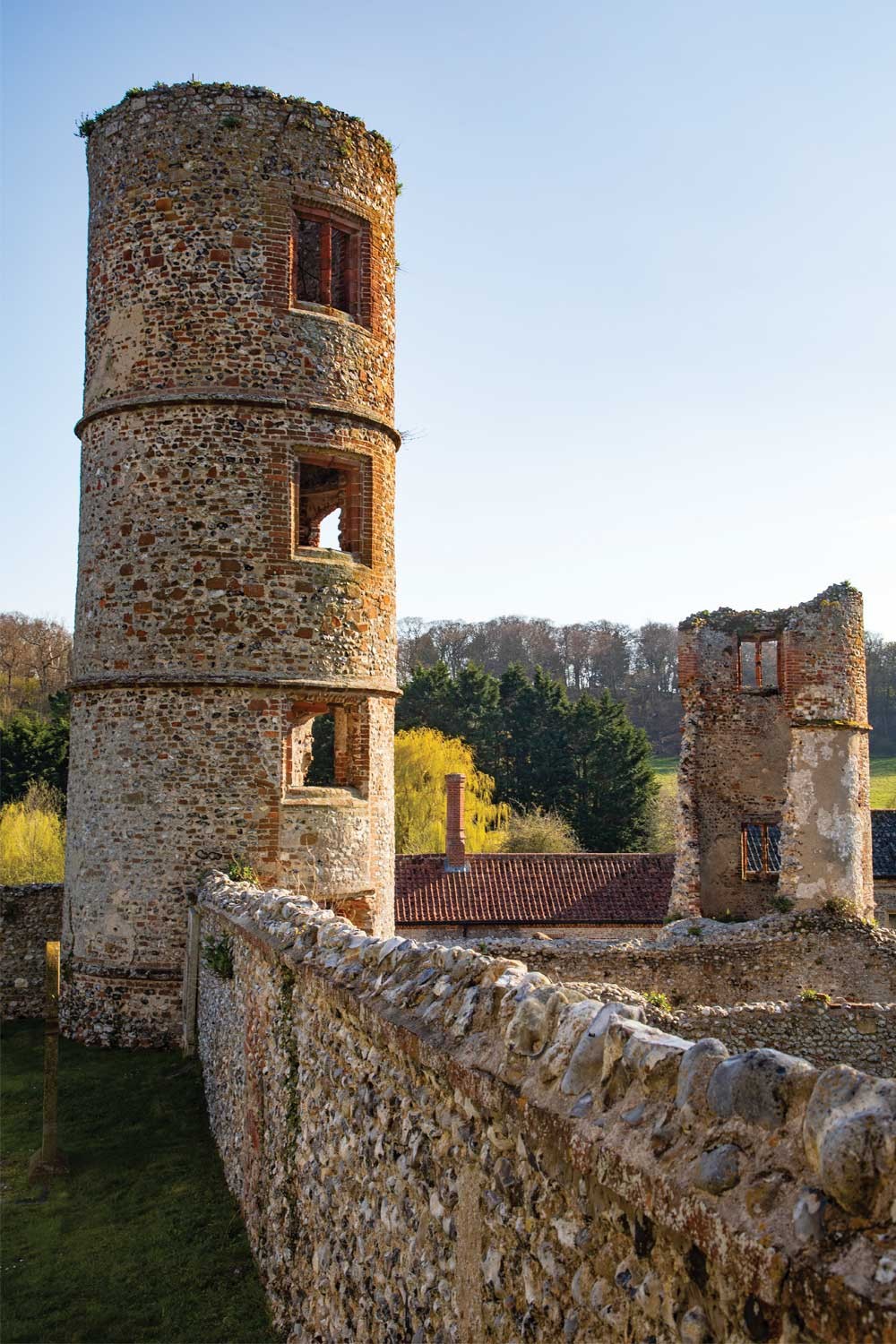
As for the church itself, the central south-facing window contains some interesting fragments of medieval stained glass, with the lower section containing five 15th century heads - some of which may have originated in the now-vanished church of St Mary.
A poignant brass memorial records the sad deaths of five of Revd Arthur Branthwayte’s young children in the 18th century, who was rector of the church for 23 years until 1792 - and the Art Nouveau war memorial is stunning. Strangely enough it was commissioned by Harold Davidson before his fall from grace.
Norfolk is blessed with over 650 churches and they all have their stories to tell - but few can be as fascinating as the church of St John at Stiffkey, which sits in one of the county’s most beautiful locations.
